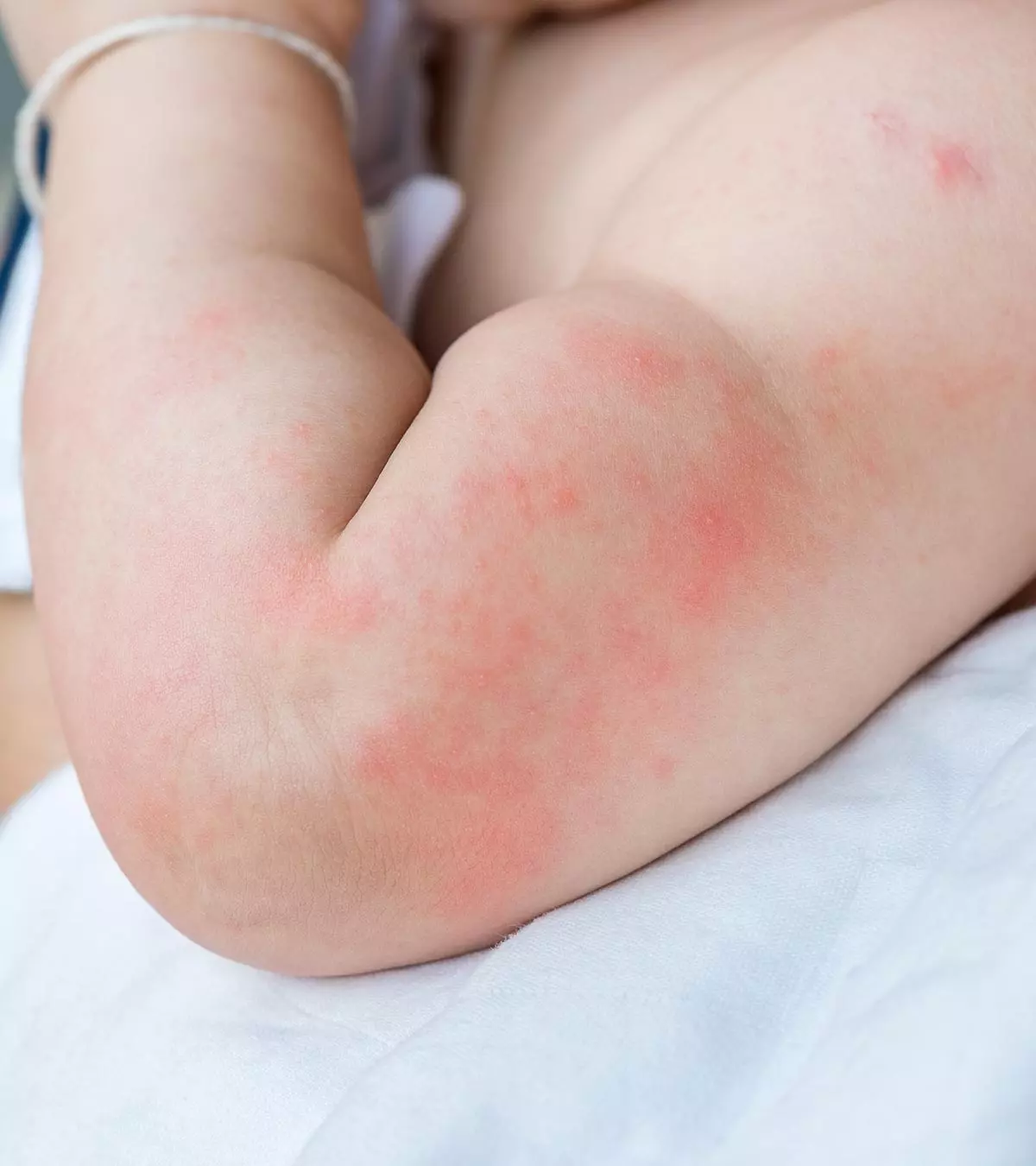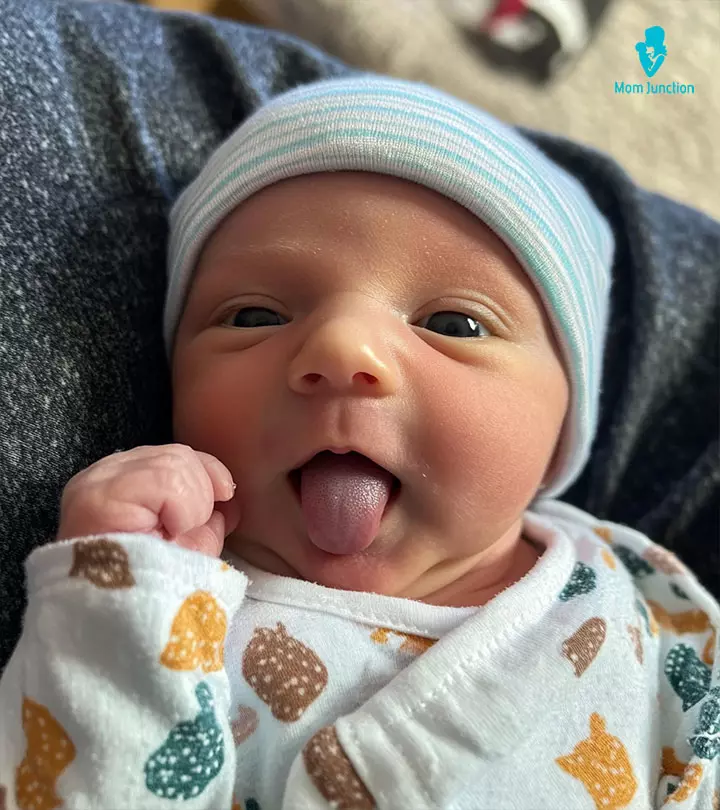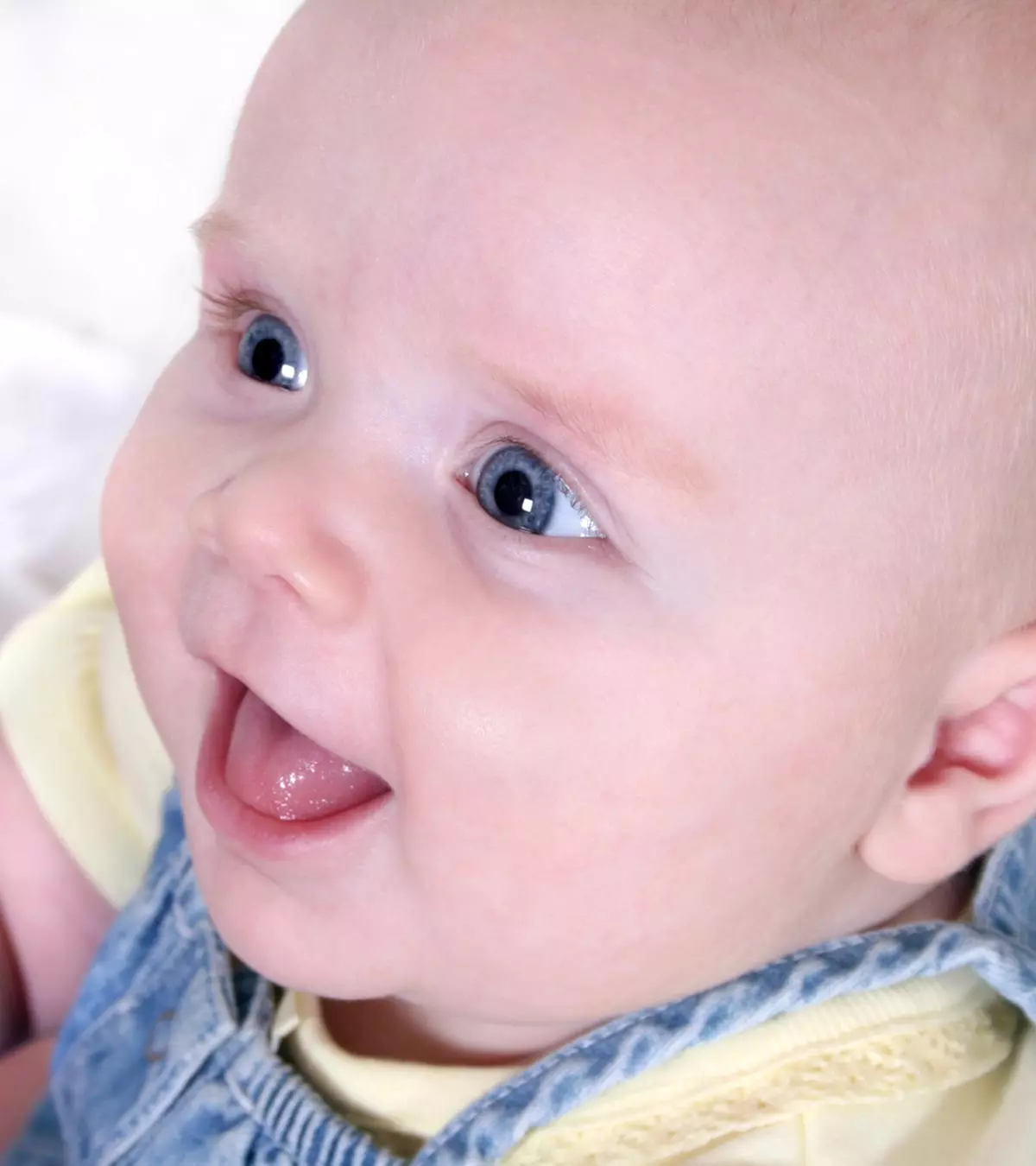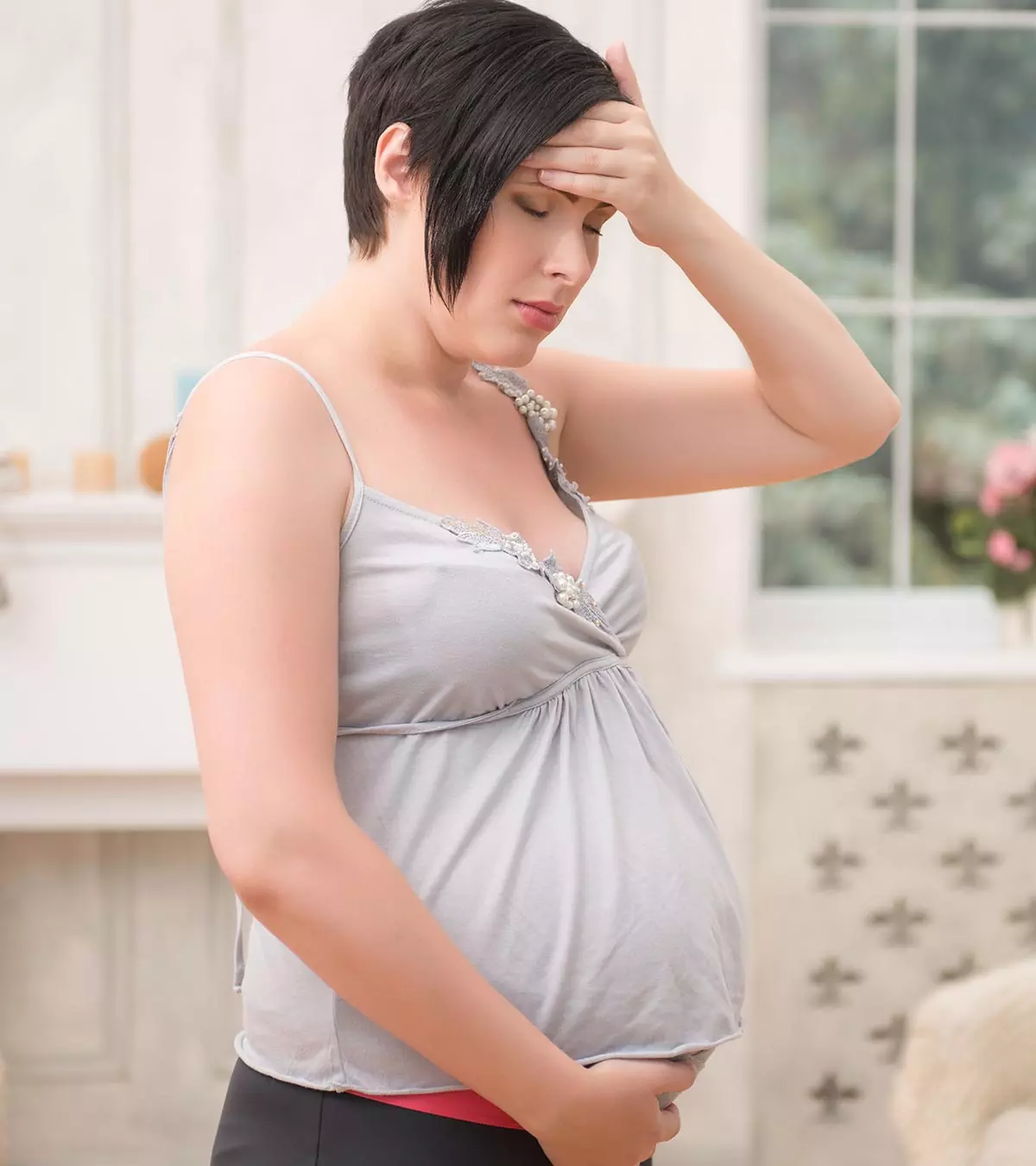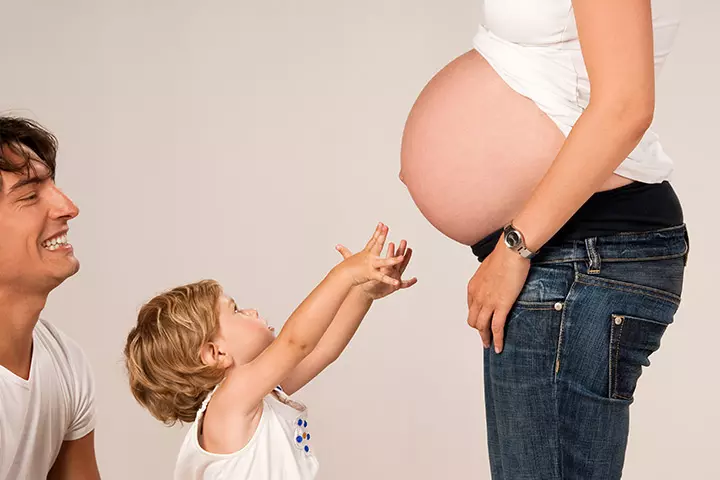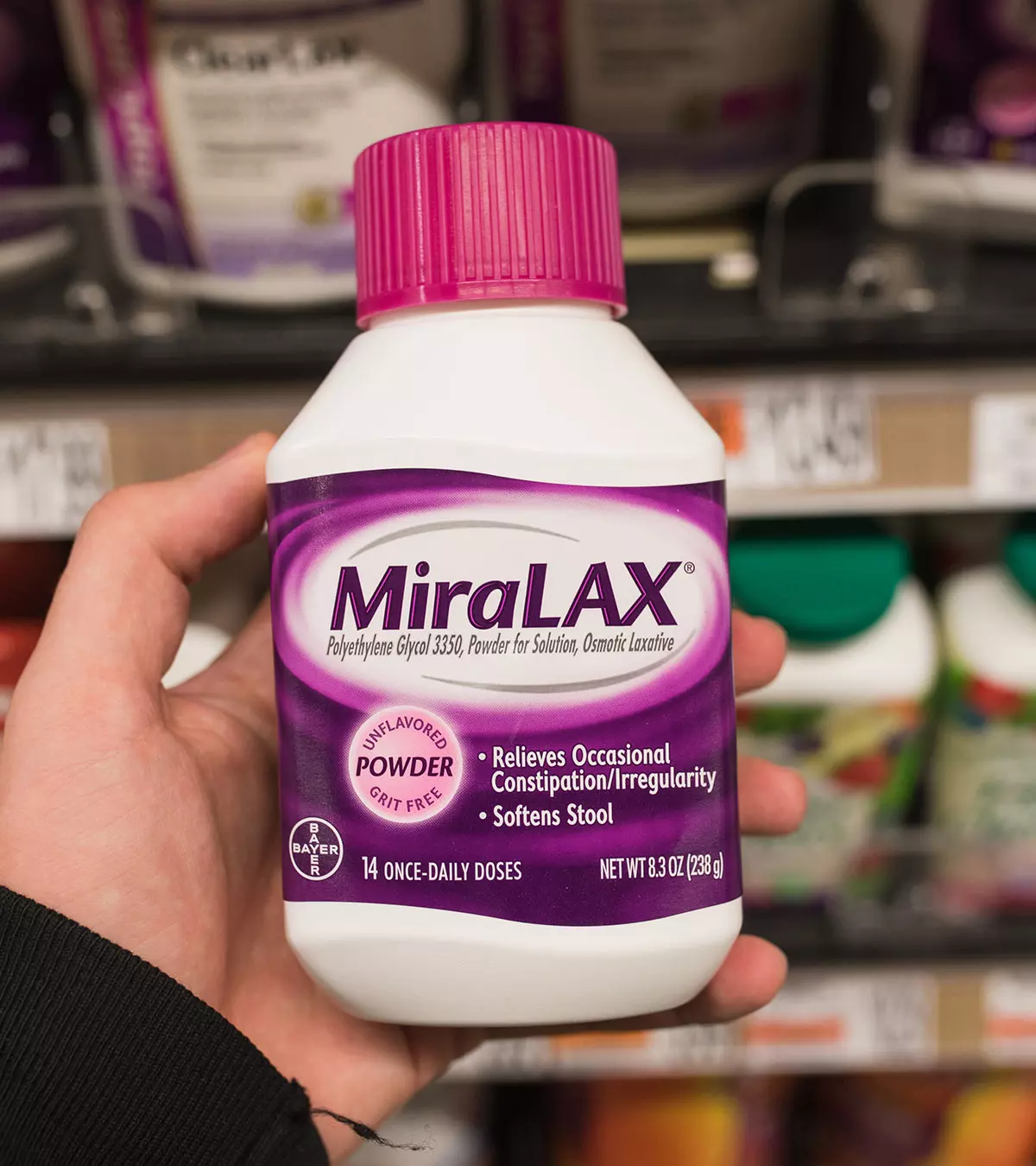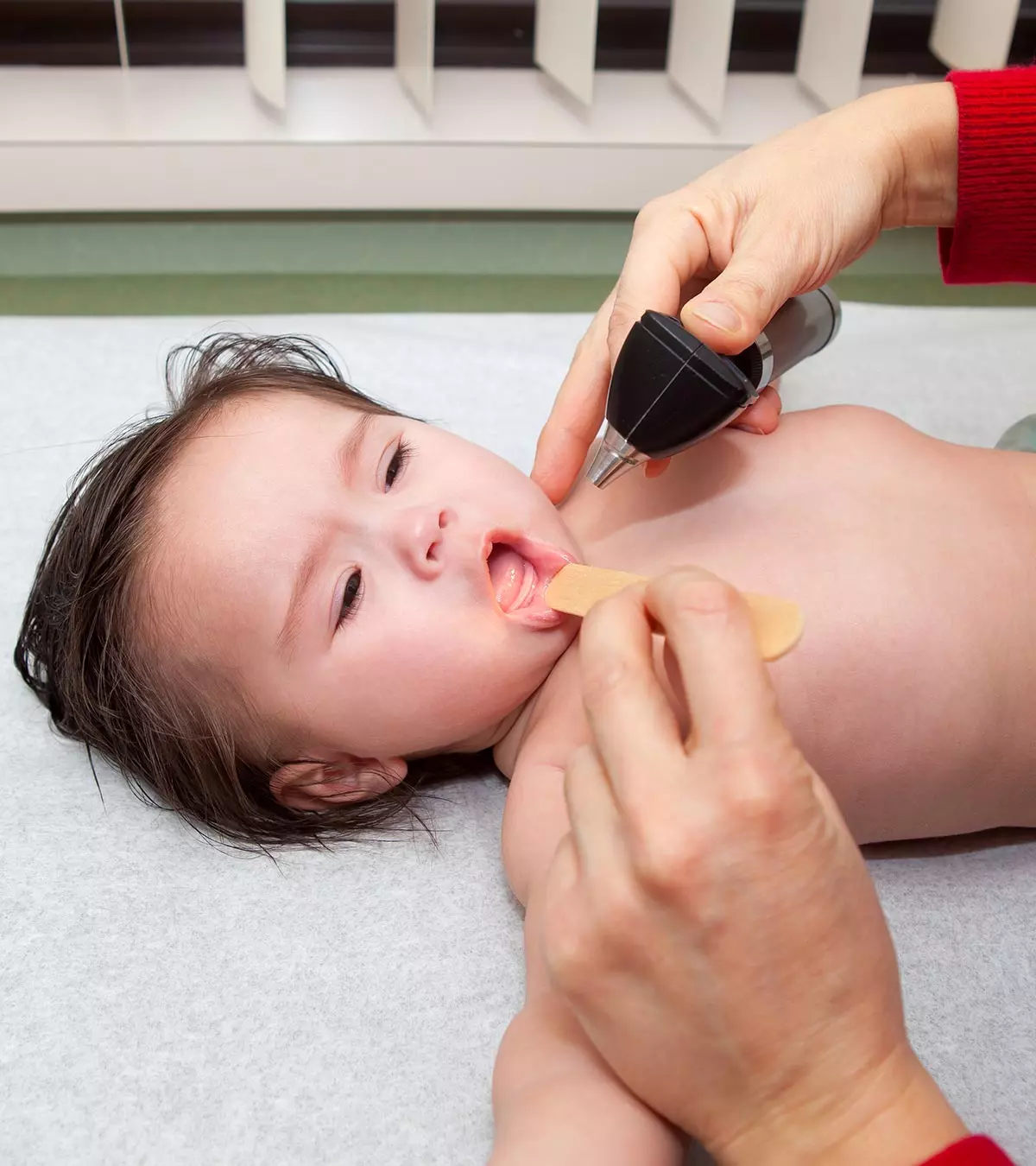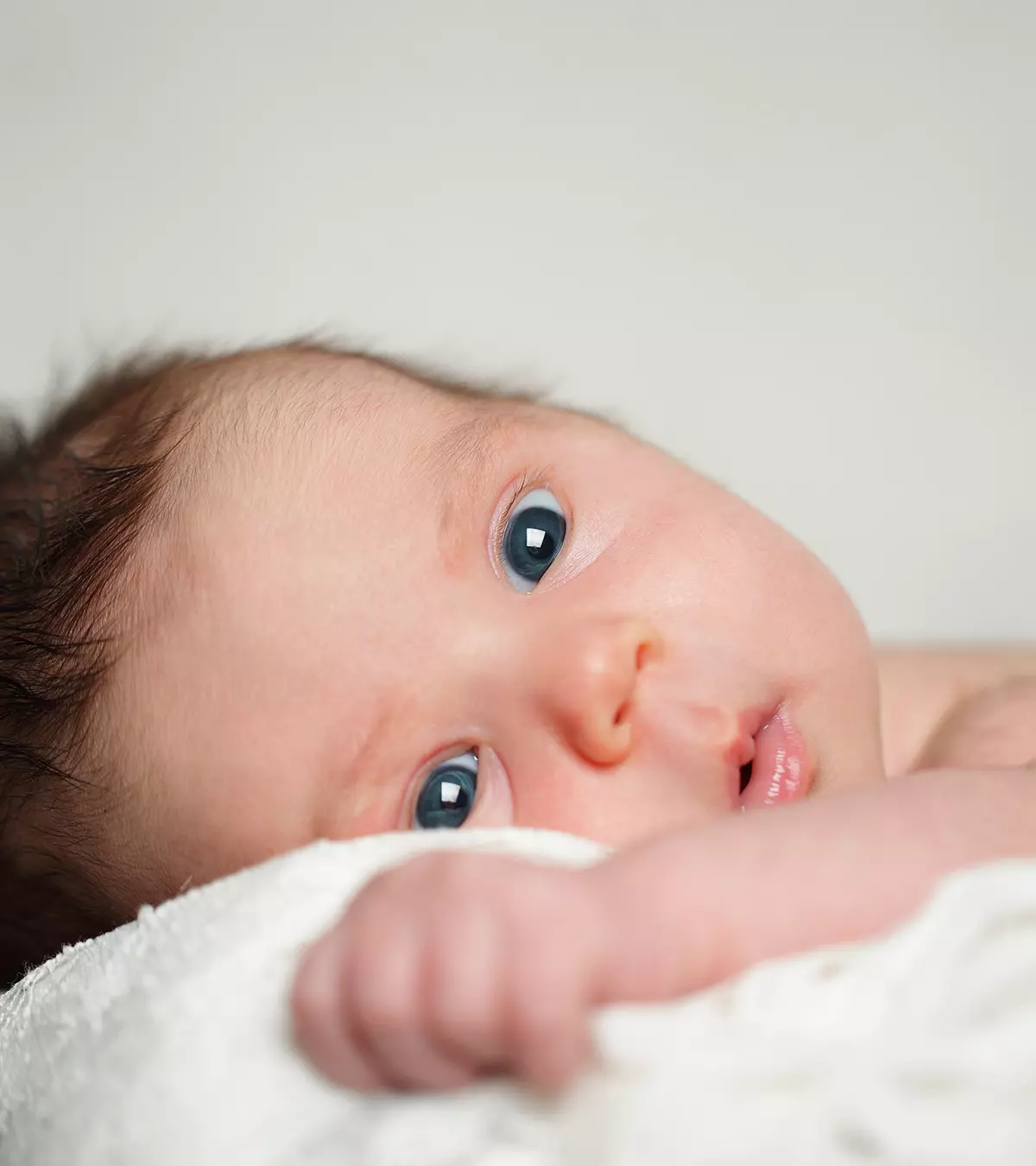
Image: Shutterstock
Blepharitis in babies is a rare eye disease caused by the clogging of oil-producing glands on the eyelids. This may lead to eyelid inflammation, resulting in crust formation on the eyelashes (crusty eyelids) and swelling of the eyelids. As a result, babies may feel itch and discomfort and often scratch their eyes. Not all cases of blepharitis are contagious diseases. However, if microbes cause the inflammation, they can spread to others.
It is recommended to seek medical care to prevent recurrence and severe infant eye infections. In addition, most babies may require long-term care, such as cleaning eyelids and warm compresses regularly to ease the symptoms. Read on to know more about the signs, symptoms, causes, and management of blepharitis in babies.
Key Pointers
- Clogged oil-producing glands on the eyelids cause blepharitis – inflammation, swelling, and crust formation.
- Blepharitis can be caused by bacterial or fungal infections, skin ailments, or allergic reactions.
- Symptoms of blepharitis include redness, thick and yellow scales, crusted eyelashes, fluid leakage, swelling, sensitivity to light, frothy tears, and dry eyes.
- Treatment for blepharitis depends on the baby’s health, age, cause, and severity of symptoms and can include antibiotic ointments, teardrops, and warm compresses.
- Good hygiene practices can help prevent blepharitis in babies.
Different Types Of Blepharitis
Blepharitis is classified into two types (1).
- Anterior blepharitis: Inflammation of the area where the eyelashes are attached. It is on the outer front edge of the eyelid. It is usually caused by bacteria such as staphylococcus and seborrheic or dandruff.
- Posterior blepharitis: Inflammation of the inner edge of the eyelid where it touches the eyeball. It occurs mostly due to the dysfunction of the meibomian gland (an oil gland).
What Causes Blepharitis In Babies and Toddlers?

Image: IStock
The following factors can cause blepharitis (2).
- Bacterial infection (staphylococcus bacteria)
- Fungal infection
- Acne rosacea (skin condition with redness on the face)
- Parasite such as Demodex (tiny mites in the eyelashes)
- Seborrheic dermatitis (dandruff on scalp and eyelids)
- Abnormal oil production and secretion from the meibomian glands of the eyelid
- Allergic reactions to skincare products or medicines
Signs And Symptoms Of Blepharitis In Babies
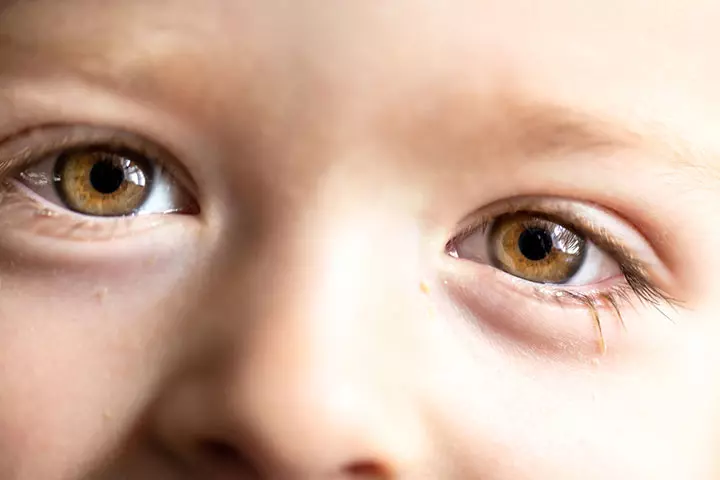
Image: Shutterstock
Signs and symptoms may vary depending on the cause. You may notice that your baby is red around the eyes and on the eyelids. Below are the other symptoms and signs of the condition (3).
- Baby rubbing their eyes more than usual
- Swollen baby eyes
- Redness around the eyelids and eyes
- Thick and yellow scales stuck to the eyelids; scales may resemble dandruff
- Eyelashes appear crusted after waking up from sleep
- Fluid leaking from the eyelids (eye discharge)
- Increased eye sensitivity to light (photophobia)
- Frothy tears
- Dry eye or excessive tearing
- Misdirected eyelashes
- Loss of eyelashes
- More frequent blinking
Your baby might be crankier than usual due to the irritation of the eye. You should also look for skin rashes or other signs that might indicate the baby is ill.
When To See A Doctor?
See a doctor promptly on observing any of the following signs (4).
- Increased redness or swelling of the eye
- Pus or blood draining from the eyelid
- Crying and trying to itch the eye
- Fever
- Worsening of any symptom
Who Are At Risk For Blepharitis?
Blepharitis can be usually seen in a baby with (5):
- Seborrheic dermatitis or scalp dandruff
- Dry eye (not enough tears in the eyes)
- Any abnormalities of the meibomian glands
How Is Blepharitis Diagnosed?

Image: IStock
The doctor will do a physical examination and ask about the child’s health history. Tests are not required to diagnose blepharitis. In some cases, your doctor may collect samples of oil or crust from your baby’s eyelid using a cotton swab. These samples are examined for fungi, bacteria, or any evidence of allergy (6).
How Is Blepharitis Treated?
Treatment will depend on your baby’s general health, age, cause of disease, and severity of symptoms. Your pediatrician may refer to an ophthalmologist in severe cases of blepharitis. The main goal of treatment is to ease the symptoms and prevent a recurrence.
If the infection is not controlled by general care, then your doctor may prescribe antibiotic ointments, teardrops, and other medications as required (7).
You could consider using non-pharmacological methods as well. The home treatment for blepharitis in babies includes the following measures (7)
(8).
1. Compress
- Apply warm compress with the temperature close to bathwater, over the eyes for five to ten minutes.
- Avoid using a heat mask since it may cause burns.
- If your baby has acute blepharitis, then you may give warm compress up to four times a day.
- Continue warm compress for three to four days or until the symptoms disappear.
- The same can be done if your baby has blepharitis without stye (hordeolum).
- If your baby has chalazion (small cyst or lump on the eyelid), then you may have to continue the warm compress for several weeks or months until it disappears.
- If your baby has chronic blepharitis, then you may give warm compress once every day.
2. Hygiene

Image: Shutterstock
- Clean the eyelid with an ophthalmic wipe or a mild soap solution.
- You can prepare a mild soap solution using 10ml of baby shampoo diluted to 90ml of water. However, do not use harsh soaps that may cause irritation.
- Cleaning should be continued for three to four days until symptoms disappear in the case of acute blepharitis with or without stye.
- Chronic blepharitis requires cleaning every day.
 Quick tip
Quick tip3. Massage
- Massage is recommended mainly for chronic posterior blepharitis.
- After using a warm compress, you may massage the eyelid once a day.
- Gently massage from the inner corner of the eye to the outer corner along the eyelid. It may help remove crusts and secretions from the meibomian gland.
4. Local hydration
- You may use preservative-free artificial tears as per the doctor’s recommendation.
If your baby has seborrheic dermatitis, your doctor may advise you to brush your baby’s hair softly while washing with a recommended baby shampoo. Your doctor may suggest using:
- Antifungal shampoo or cream
- Corticosteroid cream or lotion
Home remedies are often safe, but it is good to consult the doctor before use since the eye is a delicate organ.
Complications Of Blepharitis

Image: Shutterstock
Blepharitis could lead to the following complications (3).
- Exacerbation of blepharitis
- Eyelash loss and changes in the eyelid edges
- In rare cases, visual impairment due to corneal ulcers
- Stye (red bump near eyelid)
- Conjunctivitis (pink eye)
- Chalazion (lump or cyst on the eyelid)
- Excessive tearing or dry eye
What Is The Difference Between Conjunctivitis And Blepharitis?
Blepharitis in babies is a rare eye disease and is a chronic (long-term) condition, while pink eye in babies can be acute (short-term) or chronic. Although not very common in infants, pink eye affects about two percent of newborns during their first month of life (9). Blepharitis affects the eyelid margins, whereas conjunctivitis or pink eye is the inflammation of the conjunctival tissue (the white part of the eye).
Blepharitis may involve the oil glands on the eyelids, and conjunctivitis is typically accompanied by engorgement of the blood vessels and ocular discharge. Acute conjunctivitis, caused by bacterial/viral infection or an allergic reaction, rarely leads to long-term problems. In contrast, blepharitis may cause chronic (long-term) conjunctivitis.
Lastly, conjunctivitis is easily treatable and usually self-limiting. However, with blepharitis, symptoms may improve but may recur repeatedly (3) (8) (10).
How To Prevent Blepharitis In Babies?
Good hygiene practices may help you to prevent eye infections due to bacteria and parasites in your baby. You may also choose good quality baby products to avoid allergies. If you notice any symptoms of seborrheic dermatitis or roseola, consult your doctor and follow the recommended treatment to prevent further complications, like blepharitis
(11).
Frequently Asked Questions
1. Does blepharitis go away in babies?
Blepharitis is a chronic condition that may, at times, go away. In other cases, it may become more severe with time (12).
2. Is blepharitis caused by poor hygiene?
Yes, chronic cases of blepharitis may occur due to poor hygiene (13). Bacteria cause the condition, and rubbing eyelids with a dirty finger or towel may lead to the condition.
3. How long does it take for blepharitis in babies to heal?
The healing time for Blepharitis depends on the causative factor and the treatment the baby is undergoing. Home treatments may be effective for mild cases, and may take a few weeks for symptoms to subside, but severe cases require medical assistance. Therefore, it is best to consult your doctor for accurate information regarding the duration of your baby’s healing process from Blepharitis (4) (14).
4. Can blepharitis in babies recur after treatment?
Yes, even after treating blepharitis, there are chances of its recurrence (14).
If you notice swelling, crust formation, or inflammation of the eyelids in your child, it may be blepharitis. However, only a healthcare professional can confirm the diagnosis of blepharitis in babies. Remember, some cases of blepharitis are contagious. Therefore, if your child has been diagnosed with it, you should avoid sending them to school or coming in contact with other children. Instead, you can try home remedies such as warm compress, eye massage, etc. Alternatively, your doctor may prescribe you antibiotic drops, teardrops, or other medicines.
Infographic: Complications Of Blepharitis In Babies
Blepharitis in infants is often caused due to infections or allergies and may cause other eye problems when left untreated. To prevent these and other severe symptoms, get your baby evaluated as you spot any indications of the eye condition. The infographic below explains the possible consequences of blepharitis in infants. Illustration: Momjunction Design Team
Illustration: Signs And Symptoms Of Blepharitis In Babies And Toddlers

Image: Stable Diffusion/MomJunction Design Team
Find relief for children from symptoms like redness, itching, and crusting through effective blepharitis treatment. Watch this informative video to learn more and take proactive steps towards better eye health.
References
1. Blepharitis; The National Eye Institute (NEI); National Institutes of Health (NIH)
2. Blepharitis in Children; The University of Rochester Medical Center (URMC)
3. Blepharitis; The National Eye Institute (NEI); National Institutes of Health (NIH)
4. Blepharitis (Child); Fairview Health Services
5. Blepharitis in Children; Stanford Children’s Health
6. Blepharitis; Boston Children’s Hospital
7. Blepharitis; The Institut national d’excellence en santé et en services sociaux (INESSS)
8. Mary Eberhardt and Guhan Rammohan, Blepharitis; St Lukes University Health Network
9. How Serious is Pink Eye In Babies?; American Academy of Ophthalmology
10. Muhammad F. Hashm et al.; Conjunctivitis; NCBI
11. Blepharitis; Oculoplastic Department, Singapore National Eye Centre ;The Singapore General Hospital
12. Blepharitis in children; Lucile Packard Children’s Hospital Stanford
13. Blepharitis; Johns Hopkins Medicine
14. Blepharitis in children; Nationwide Children’s Hospital
15. Blepharitis; Children’s Health Queensland Hospital and Health Service
Community Experiences
Join the conversation and become a part of our nurturing community! Share your stories, experiences, and insights to connect with fellow parents.
Read full bio of Dr. Vivek Goswami
Read full bio of Dr Bisny T. Joseph
Read full bio of Rohit Garoo
Read full bio of Shinta Liz Sunny






